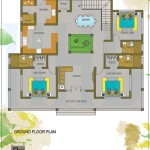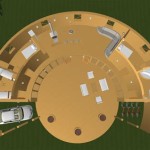Understanding Electrical Layout Plans: A Guide for Homeowners and Builders
The electrical layout plan is a crucial element of any residential construction project. It's a blueprint that guides the installation of electrical systems in your home, ensuring the safe and efficient distribution of electricity to various appliances, lighting fixtures, and outlets. Whether you're building a new home or renovating an existing one, understanding the electrical layout plan is essential for making informed decisions and ensuring the project's success. ### What is an Electrical Layout Plan? An electrical layout plan is a detailed drawing that outlines the electrical components and their arrangement within a building. It typically includes: *Symbol Representations:
The plan uses standard symbols to represent electrical components like outlets, switches, lights, and junction boxes. *Circuit Identification:
Each circuit is assigned a unique identification number or name, allowing for easy troubleshooting and maintenance in the future. *Conduit and Wiring Routing:
The plan shows how electrical wires are routed through conduits (protective pipes) or in-wall spaces, ensuring compliance with safety codes and avoiding potential hazards. *Panel Location:
The plan indicates the location of the electrical panel, which serves as the central distribution point for electricity in the house. *Specifications:
It provides detailed specifications for electrical components, including voltage, amperage, and wire sizes, ensuring proper functioning and adherence to regulations. ### Importance of an Electrical Layout Plan 1.Safety:
A well-designed electrical layout plan ensures that electrical systems are installed correctly, reducing the risk of electrical hazards, such as fires, shocks, and malfunctions. 2.Code Compliance:
Electrical layout plans help ensure that the electrical system complies with local building codes and regulations, preventing legal issues and costly rework. 3.Efficient Energy Distribution:
A well-planned electrical layout optimizes energy distribution, minimizing power losses and ensuring that all appliances and devices receive adequate power. 4.Functionality and Convenience:
The plan helps position outlets, switches, and lighting fixtures in convenient locations, enhancing the functionality and livability of the house. 5.Future Expansion and Upgrades:
A comprehensive electrical layout plan makes it easier to accommodate future renovations or upgrades by providing a clear roadmap for additional electrical work. ### Elements of an Electrical Layout Plan 1.Electrical Symbols:
Standardized symbols are used to represent various electrical components on the plan. These symbols include circles for outlets, triangles for switches, squares for junction boxes, and lines for conductors. 2.Circuit Layout:
The plan shows how electrical circuits are distributed throughout the house. Each circuit typically serves a specific area or function, such as lighting, appliances, or outlets. 3.Conduit and Wiring:
The plan indicates the size and type of conduit used to protect electrical wires. It also shows the routing of wires, ensuring safe and efficient distribution of electricity. 4.Panel Schedule:
The plan includes a panel schedule that lists all the circuits and their corresponding circuit breakers in the electrical panel. This schedule facilitates troubleshooting and maintenance. 5.Lighting Design:
The electrical layout plan takes into account the lighting design of the house, indicating the placement of light fixtures, switches, and dimmers to create the desired ambiance in each room. ### Tips for Homeowners and Builders 1.Work with a Qualified Electrician:
Always hire a licensed and experienced electrician to create and execute the electrical layout plan. DIY electrical work can be dangerous and may lead to safety hazards. 2.Consider Future Expansion:
When designing the electrical layout, think about potential future additions or renovations. This foresight will save you time and money in the long run. 3.Prioritize Safety:
Safety should be the top priority when designing the electrical layout. Ensure proper grounding, circuit protection, and compliance with local building codes. 4.Plan for Energy Efficiency:
Consider energy-efficient lighting and appliances to minimize energy consumption and reduce monthly utility bills. 5.Involve the Electrician Early:
Engage the electrician early in the planning process to ensure that the electrical layout plan aligns with your vision and meets your specific requirements. An electrical layout plan is a critical document that serves as the foundation for a safe, efficient, and functional electrical system in your home. By understanding the elements and significance of an electrical layout plan, homeowners and builders can make informed decisions and work with qualified electricians to create a successful electrical installation project.
House Electrical Plan In Autocad File Layout Residential Cad

3 Bedroom House Electrical Layout Plan Dwg File Architectural Lighting Design

Electrical Layout Plan Of House Floor Design Autocad File Cadbull

Dwg File Of The Electric Layout Plan Residence House Electrical Cad Residential

Home Electrical Plan Design Autocad File Cadbull

Small House Electrical Layout Plan Cad Files Dwg Plans And Details

Electrical Design Of A Villa In Autocad Cad 1018 17 Kb Bibliocad

Electrical Plans Layout Panel Layouts Designpresentation Com

Electrical Layout Plan Of The House With Detail Dimension In Autocad Plans Boutique Interior Design

2 Bhk House Electrical Layout Plan Autocad Drawing








